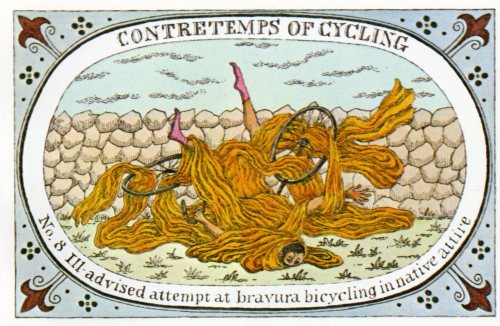
For the last few days I’ve been reading a book titled You May Also Like: Taste in an Age of Endless Choice by Tom Vanderbilt. Very interesting, though (for my taste) a little heavy on statistics from sociological, psychological and marketing surveys (“In a group of 100 Americans of widely differing incomes, 100% will consider themselves middle-class” and “11 of the 12 rats went for the sugar,” etc.) Still, the whole idea of the whys behind liking and disliking fascinate me. They feel wildly complicated and (as Vanderbilt admits) almost impossible to determine. So, of course, I want to try.
A majority of people, when asked their favorite color will answer “Blue.” Is that because it’s the color of the sky? Cool water? Faded levis? Do infants prefer blue? Statistically no, they do not. Nor do the majority of people want blue cars. So a “favorite” – that is, the act of liking – can be changed by context, connotations, associations, experiences…or the lack of any of the above. Notice, by the way, that a blue cover was chosen for You May Also Like. Coincidence? Probably not.

Blue sky, blue water, blue jeans….
“Taste” is one of those words that pushes several directions at once (poets love words like this) because it can be a verb (“When I taste ripe raspberries right off the vine on a sunny day, I’m in heaven”) or it can be a noun with several definitions (“It was clear she had good taste” – that is, discerning judgment – and “She loved the taste of a root beer float” – a sensory experience, in the mouth, on the tongue, all fizz and creaminess going down the throat. Words like that can be used to twist a sentence, make it ring two bells at once, and surprise someone (hopefully both author and reader.) The poet Heather McHugh taught me to look at words that work hard and do double duty like that. You can play with them, like kids play with playdough, reshaping them constantly.

As for liking and disliking, I like the taste of root beer, though I have to admit it’s a little odd. Still, sweet is sweet, and humans apparently are programmed to like what’s sweet (so some liking can be a genetic predilection.) But I don’t like things too sweet. Don’t like membrillo, too sweet. Love sauerkraut, not the slightest bit sweet. So liking can be quantified, as can disliking. Don’t like apricots very much, but compared to liver – ugh, gag, etc.- apricots are delicious. Like Auden’s poetry, while Ashbury’s poetry leaves me thinking meh. Usually prefer non-fiction to fiction, unless the non-fiction is badly written and the fiction is brilliant…those opinions being a matter of personal taste (discerning judgment, right?) I like Matisse, don’t much like Rothko, though my sister keeps telling me to look more carefully at Rothko. I try. Maybe Rothko for me is like an apricot. Not liver, but also not root beer.

Classic Root Beer Float

Classic Ugh…That Is, Liver
I trust my sister’s judgment – we often have similar likes and dislikes. But last night I watched Episode 1 of a TV series she recommended and I found it too long, badly paced, confusing. The guilt I felt about not liking it made me want to like it more, but on the root beer-to-liver scale, it was too close to liver. Still, when there is this kind of pressure to like something, then unadulterated liking is at risk. We want to like what someone we admire likes. I remember wanting to like coffee when I started drinking it, and not really liking it, but all the adults I loved liked it, and I wanted so much to like it that eventually I did. So taste can be a matter of habituating ourselves to something. It’s not always logical or pre-programmed. It’s sometimes slow in coming. Shared likes can create a community of sorts, as Facebook tries to demonstrate.

Hated it, then loved it….
Hope to finish Vanderbilt’s book soon. Then I have to focus on finishing a book one of my friends chose for our next book discussion. She chose it because she liked it, of course. I am only on Page 53…no real opinion yet as to its root beer/liver quotient. Some of us in the book group will love it, some not, that’s the way it usually works – it takes a pretty extraordinary book to be universally loved, and we are perfectly happy just to read books that will expand our reading horizons.
I used to tell my creative writing students to write for themselves and for the type of readers who will love their particular story. It’s not smart to write for the widest possible audience unless your motivation is all bottom-line. Instead, write for readers who will browse the shelves of the library aching to find just your story. Think of your audience as small. If that audience widens up to include more people – that is, if it turns into a blue sky people point to and say, “Blue is my favorite color” – then so much the better. But there are lots of colors in a paint box. My favorite color? Well, today it’s green. I wouldn’t want a green car, but I like green hills. And wouldn’t a green story be wonderful?


















































